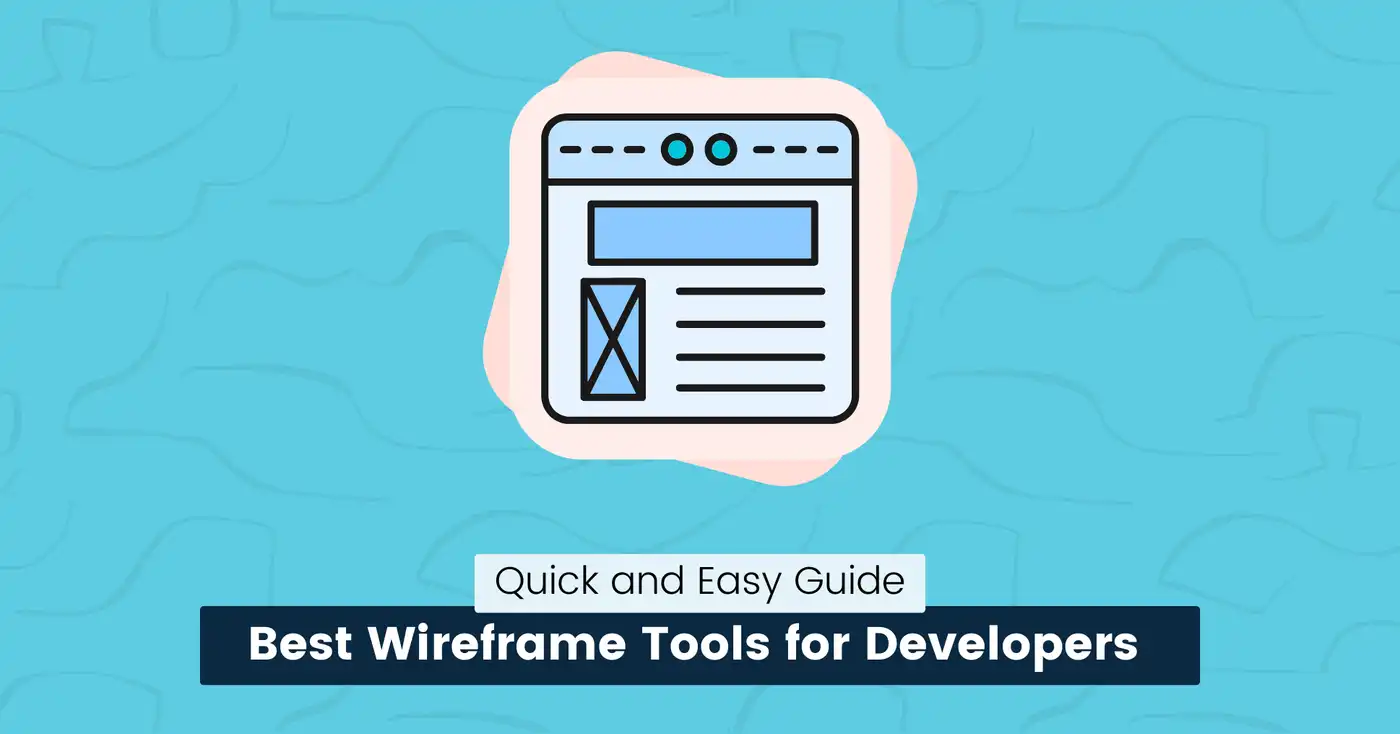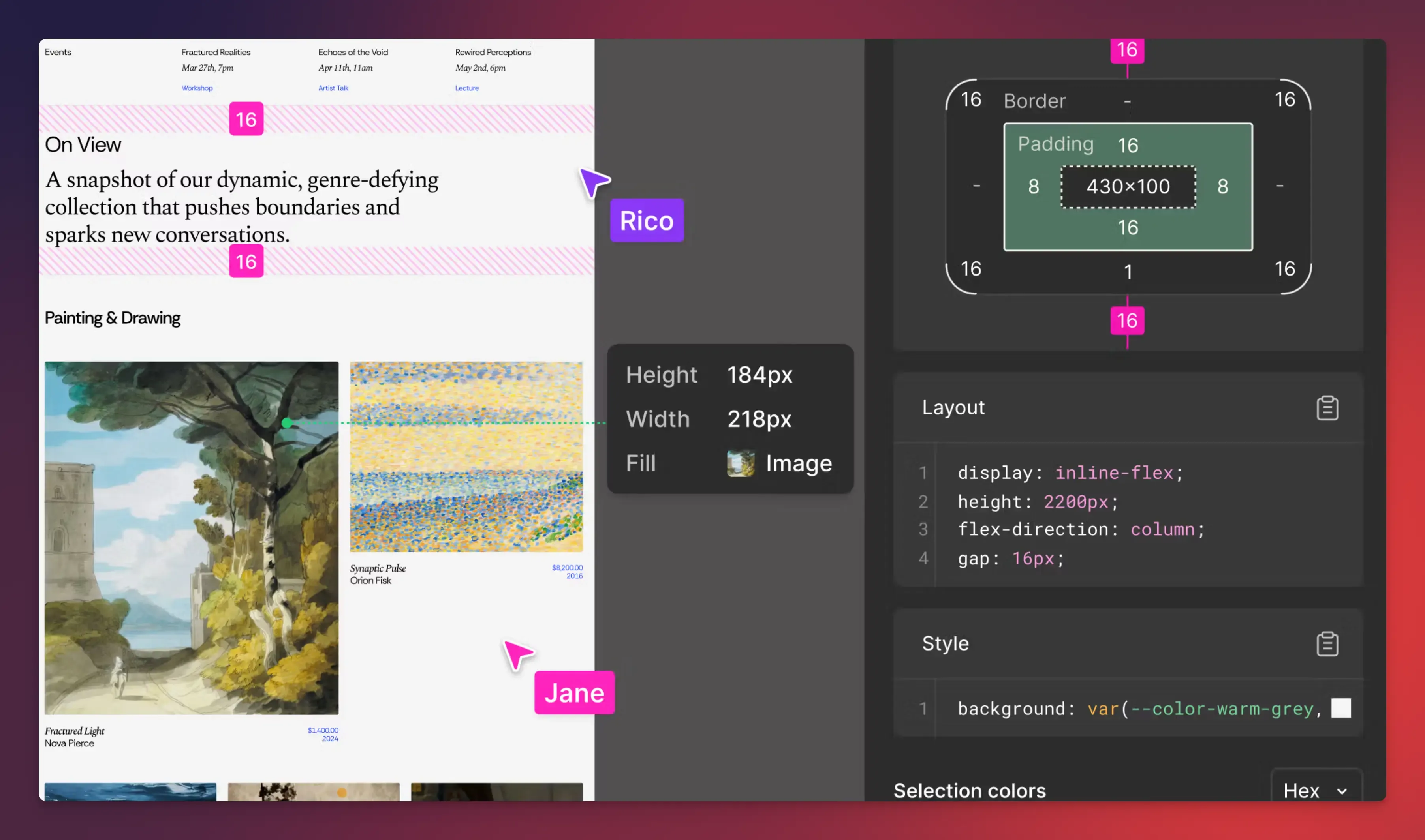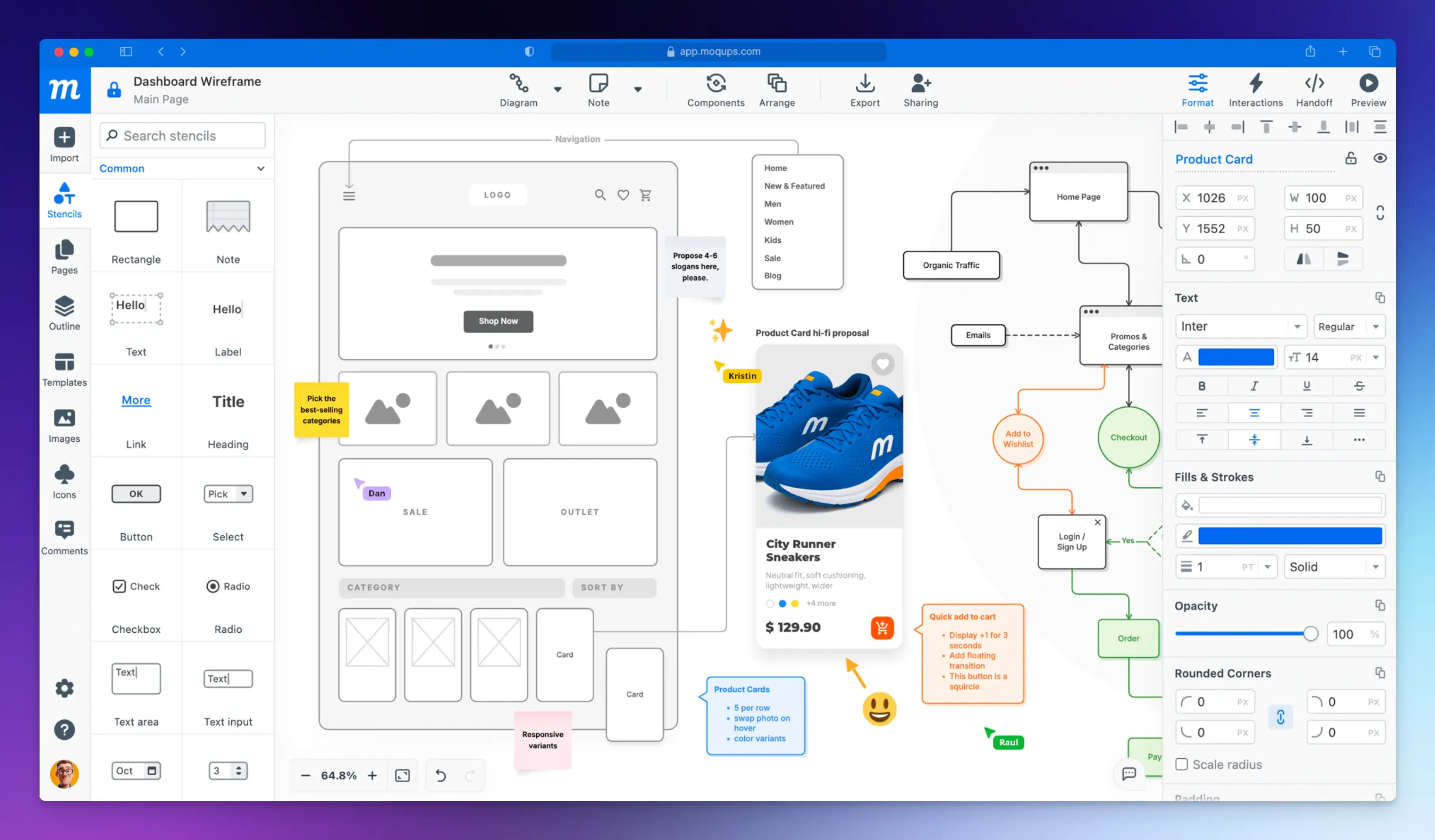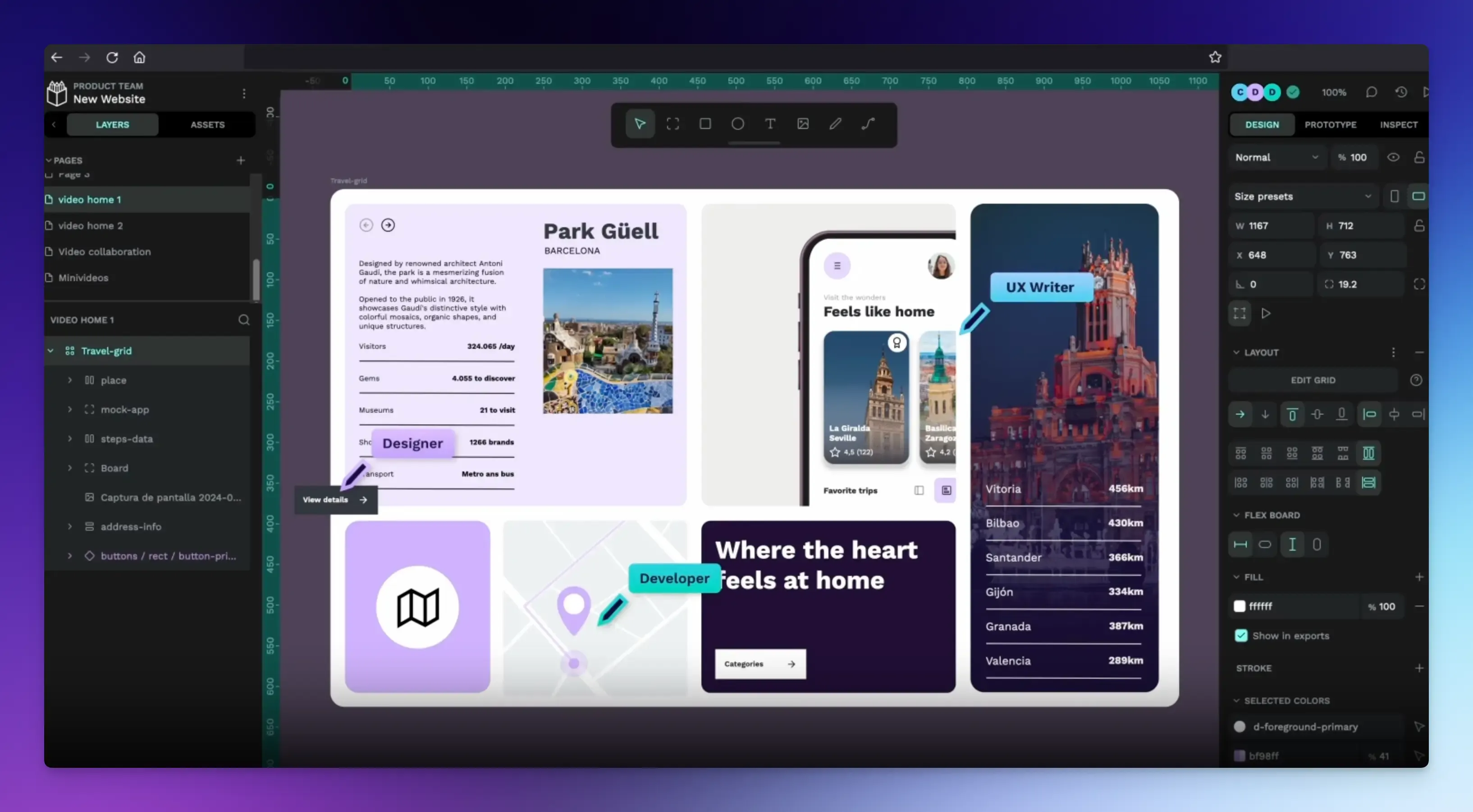
8 Best Wireframe Tools for Developers (2025)
What is the first thing you do when a new app idea forms in your head? You sketch the idea out before writing code.
This initial sketch serves as the foundation for your entire project, ensuring your design makes sense before you invest hours in development.
Sketching on a napkin or using a basic design tool only takes you so far. You need a dedicated tool that allows you to create layouts, communicate design concepts, and make quick edits based on feedback.
This is where wireframe tools come in. These tools offer a collaborative space where you can design user flows or identify potential technical issues before they become costly problems.
There are countless wireframing solutions available, so deciding which one is best for you can be difficult.
We have tested and analyzed the best wireframe tools, focusing on how each one handles collaboration, its learning curve, and how easily it integrates into the next stages of building a functioning application.
Keep reading to learn which tool gives you the most flexibility to iterate rapidly and keeps your entire team on the same page from the very first sketch to the final product launch.
Let’s get started.
What Are Wireframe Tools?
A wireframe is a simple drawing that tells you exactly what you need to build before you write a single line of code.
It’s the step that prevents you from building an entire backend for a feature that users find confusing or difficult to access.
Wireframe tools serve as digital sketchpads, allowing you to sketch the structure of a website or application. They provide basic shapes (rectangles for content, lines for text, and circles for buttons) so you can map out the layout without getting distracted by colors, fonts, or final graphics.
Once a wireframe has been approved, you can expand on the concepts and produce a detailed design before moving on to the development stage.
Key Features to Look for in a Good Wireframe Tool
When evaluating tools, focus on what will genuinely make you more efficient and make the process easier.
- Collaboration: You need to see the changes a designer or product manager makes in real-time. It stops the endless back-and-forth of sending files and versions.
- Interactivity: A good tool lets you create clickable prototypes. This allows everyone, including non-technical stakeholders, to experience the user flow and test the application’s logic before any code is written.
- Component Libraries: A huge time-saver. Instead of drawing the same navigation bar on different screens, you can create it once, save it as a component, and reuse it everywhere.
- Handoff Features: A good tool automatically generates style guides and export options for assets, making the transition from design to code easier.
- Easy to Use: Choose a tool that you and your team will actually use. The interface should be user-friendly to reduce the learning curve and get your ideas into a shareable format as quickly as possible.
8 Best Wireframe Tools
Here are the best wireframing tools, including their standout features, pros and cons, and pricing, to help you decide.
Figma

Figma is the industry standard for wireframing and web design. It is a cloud-based design tool for creating user interfaces, websites, and mobile apps, with real-time collaboration that allows multiple people to work on the same design file simultaneously in a web browser.
Key Features:
- Figma Design for UI/UX prototyping.
- Prototyping with transitions and animations to simulate the final user experience without writing code.
- Component libraries for reusable design elements, such as buttons and icons.
- Dev Mode provides advanced inspection tools to see design specifications, copy code snippets, and export assets.
- FigJam for brainstorming and diagramming.
Pros:
- Real-time multi-user editing.
- Strong handoff features.
- A large library of community-built plugins.
Cons:
- Performance can be slow for ****complex files with many frames and prototypes.
Pricing:
- Free plan available.
- The Professional plan starts at $3 per month (billed annually).
snappify will help you to create
stunning presentations and videos.
Framer
Framer is a web design platform that enables you to build professional websites without writing code.
It started as a code-based prototyping tool and has evolved into a powerful web builder with AI-assisted wireframing, interactive features, and a built-in publishing host.
Key Features:
- Interactive prototypes with smooth scroll animations, hover effects, and complex transitions.
- Built-in CMS to manage dynamic content like blog posts and portfolio projects.
- An AI website builder for creating layouts and advanced components in seconds.
- Real-time collaboration for multiple team members to work together.
- Drag-and-drop editor for easy design creation.
- Figma and Sketch integration to copy and paste your layers and frames directly into Framer’s canvas.
Pros:
- All-in-one hosting and publishing.
- Best for complex animations and micro-interactions.
Cons:
- Steep learning curve for advanced interactions.
Pricing:
- Free plan available.
- Pricing starts from $10 per month (billed annually).
Sketch

Sketch is a dedicated vector-based design and wireframing tool for macOS. It is built specifically for creating user interfaces, high-fidelity mockups, UI component libraries, interactive prototypes, and hand-off specs to developers.
Key Features:
- Infinite canvas for creating vector-based designs, illustrations, and icons.
- Stack layouts for responsive design across different device sizes.
- Vector editing tool with ****smart guides, color variables, and component symbols.
- Interactive prototypes with overlays and smart animations.
- Collaboration and handoff features for sharing designs and prototypes via a link.
- Inspection tools to measure layers, copy CSS attributes, and export production-ready assets.
Pros:
- Offline functionality with a native macOS app.
- Design system management tools.
- Wireframe kits and a large plugin ecosystem.
Cons:
- Only available for macOS.
Pricing:
- 30-day free trial.
- Pricing starts from $12 per editor per month (billed annually).
UXPin
UXPin is a code-based design and prototyping tool that helps you create interactive wireframes and UI designs for websites and mobile apps.
Its Merge technology allows you to use actual React components in your designs and create prototypes that look and function like the final product.
Key Features:
- Advanced prototyping to create multi-step user flows.
- Interactive design elements with multiple states (like hover, focus, or disabled).
- UXPin Merge syncs your product’s coded React component library directly with the design editor.
- AI Component Creator can generate new React UI components from a prompt.
- Collaboration features that let multiple team members work on the same prototype and leave comments.
- Developer handoff with specifications, assets, and code snippets.
Pros:
- Strong design consistency and reusable UI components.
- High-fidelity code-based components.
Cons:
- The interface isn’t very user-friendly.
Pricing:
- Free trial available.
- Pricing starts from $6 per editor per month (billed annually).
Moqups

Moqups is a visual collaboration platform that enables teams to create wireframes, mockups, diagrams, and prototypes in a single tool.
Key Features:
- Drag-and-drop editor with access to a huge library of pre-made UI elements.
- Low-fidelity wireframes to help you get started with your web page design.
- Interactive prototyping to test user flows.
- Collaboration tools with comments, annotations, and sticky notes.
- Template library for websites, mobile apps, and dashboards.
Pros:
- Easy to use for beginners and non-designers.
- All-in-one tool for wireframing, diagramming, prototyping, and flowcharts.
Cons:
- It can’t be used offline.
Pricing:
- Free plan available.
- Pricing starts from $8 per month (billed annually).
Miro

Miro is a visual collaboration platform that serves as a digital whiteboard.
It helps distributed teams work together effectively, from brainstorming to designing and wireframing.
Key Features:
- Templates and UI library with pre-made wireframe components.
- Infinite canvas with drag-and-drop elements.
- Real-time collaboration and asynchronous feedback with comments and sticky notes.
- Integrations with apps like Icon Finder and Unsplash for enhanced wireframes.
- AI features for building boards, layouts, and summarizing ideas.
Pros:
- Good for remote collaboration.
- Flexible canvas for keeping everything in one place.
Cons:
- Performance can lag with heavy boards.
Pricing:
- Free plan available.
- Pricing starts from $8 per user per month.
Balsamiq
Balsamiq is a wireframing tool for creating quick, simple mockups for websites and mobile applications.
Its main goal is to make drawing feel like sketching on a whiteboard, helping teams focus on a project’s structure and plan without being distracted by other visual design details.
Key Features:
- Drag-and-drop interface to quickly create wireframes.
- Huge library of built-in UI controls such as buttons, text blocks, form fields, and common icons.
- Low-fidelity visuals by default to keep feedback centered on the layout, user flow, and functionality.
- Reusable Components and symbols to maintain consistency and save time.
- Basic interactive prototyping for early-stage usability testing.
- Real-time co-editing features with threaded comments.
Pros:
- Very fast to sketch structure and layout.
- Great for early-stage ideation.
Cons:
- You cannot create high-fidelity mockups or final designs in it.
- Prototyping is very basic.
Pricing:
- Plans start at $12 per month for two projects.
Penpot

Penpot is an open-source design and prototyping tool that facilitates collaboration between designers and developers. It allows teams to create everything from wireframes to interactive prototypes within a web-based platform.
Key Features:
- Wireframing kit and templates, including a wide array of pre-made UI components.
- Inspect mode gives instant access to SVG, CSS, and HTML code.
- Interactive prototyping for early testing and feedback.
- Collaboration and sharing with view and comment permissions.
Pros:
- Open-source with a self-hosting option.
- Figma-like interface.
Cons:
- Smaller plugin ecosystem compared to other tools.
Pricing:
- Free plan available.
- Paid plans start from $7 per editor per month.
snappify will help you to create
stunning presentations and videos.
Final Words
Wireframe tools are an important part of your design and development workflow.
By choosing the right tool, you can improve communication with your team and speed up the process from idea to code.
For further reading:
FAQs:
How do you choose the right fidelity in wireframe tools?
Low-fidelity wireframe tools are best for early brainstorming and simple sketches focusing on layout and structure. Use high-fidelity wireframes when you need to test specific interactions, present to stakeholders, or finalize detailed development specs.
What is the difference between a wireframe and a prototype?
A wireframe is a static, visual blueprint that shows a screen’s layout. A prototype is an interactive model that simulates user flow and shows how the application will work.
